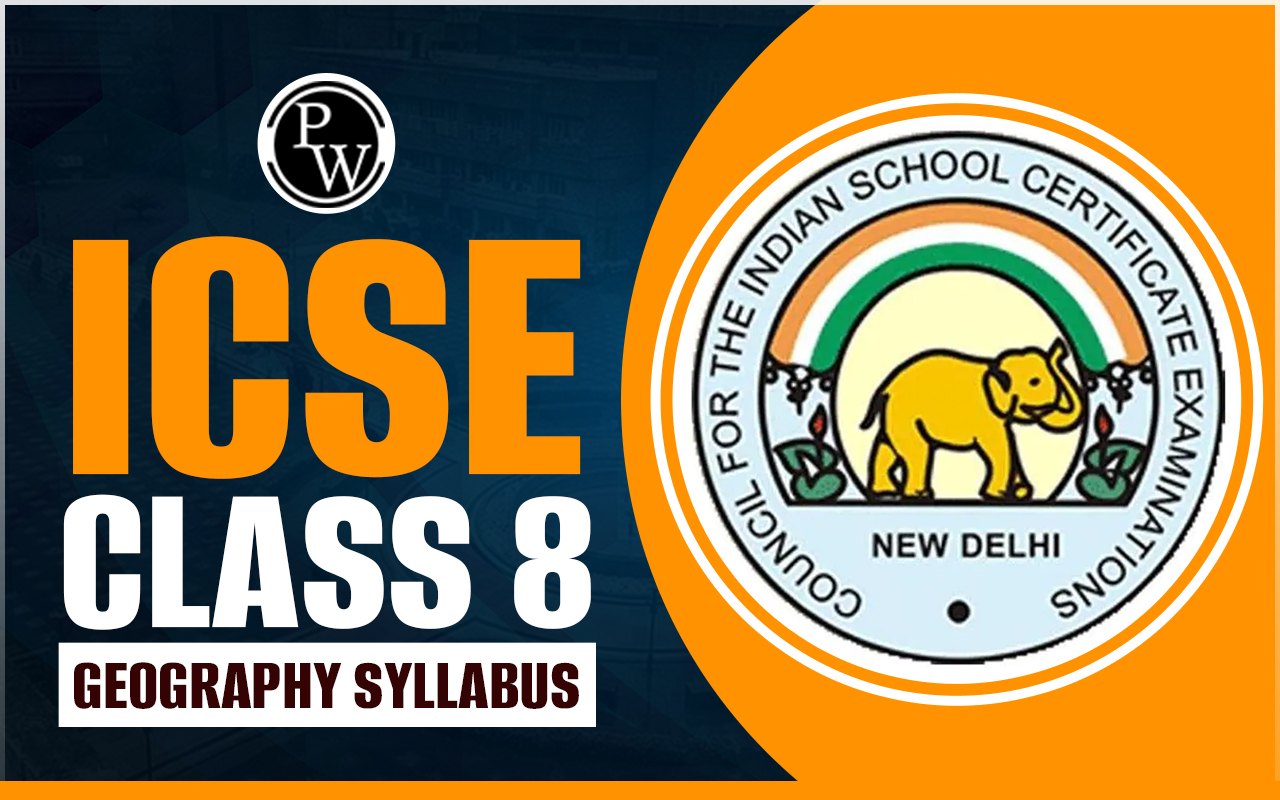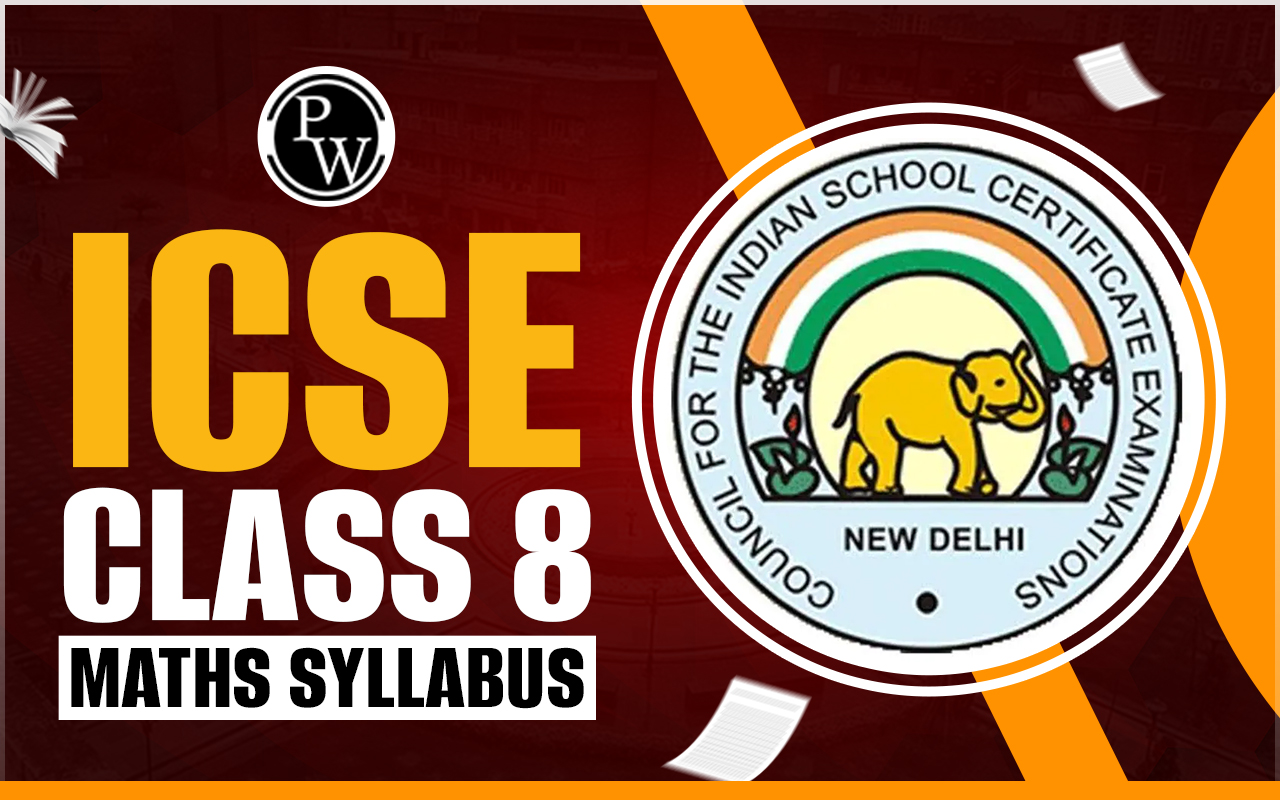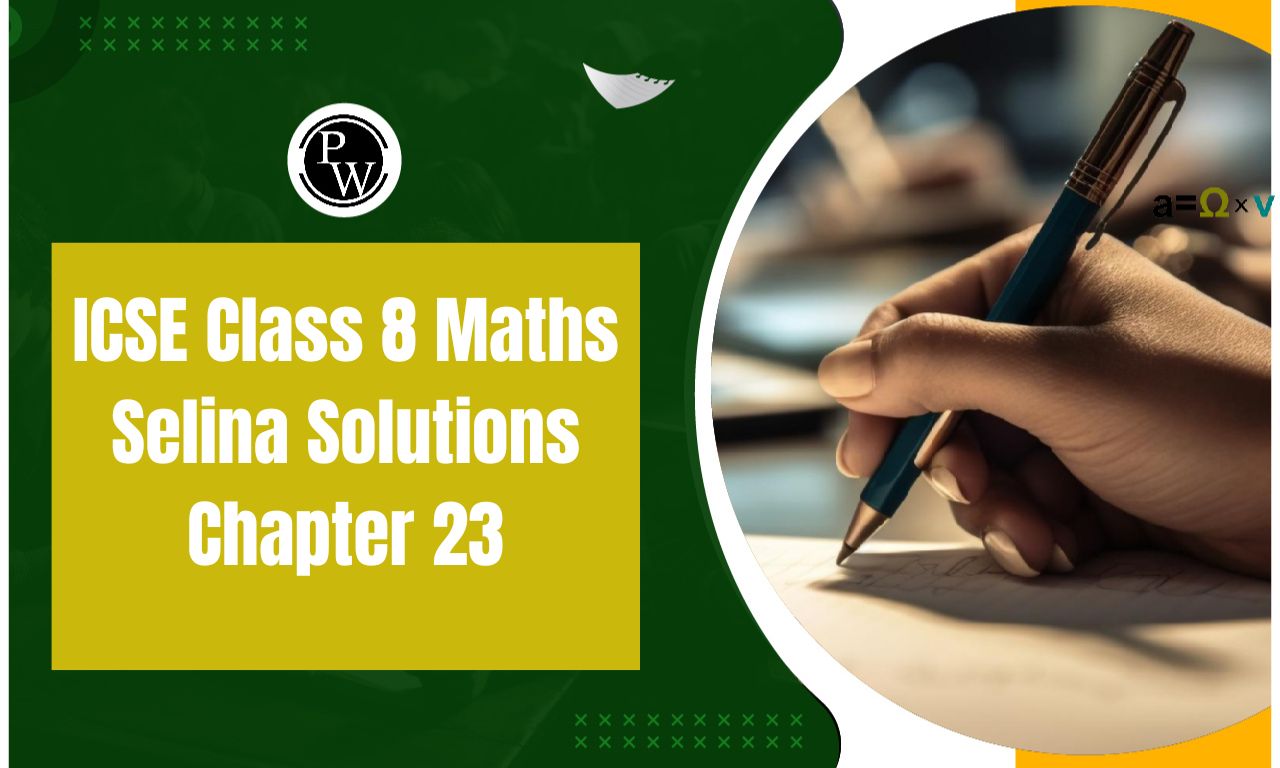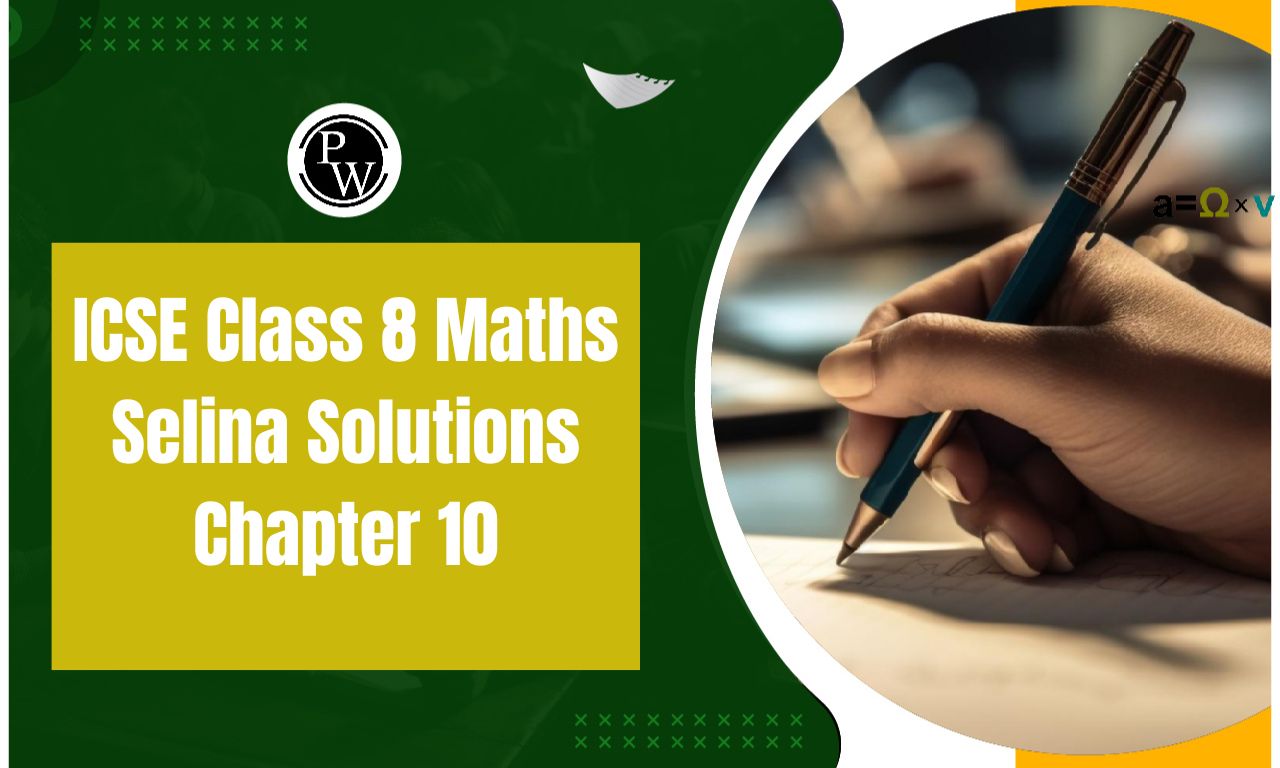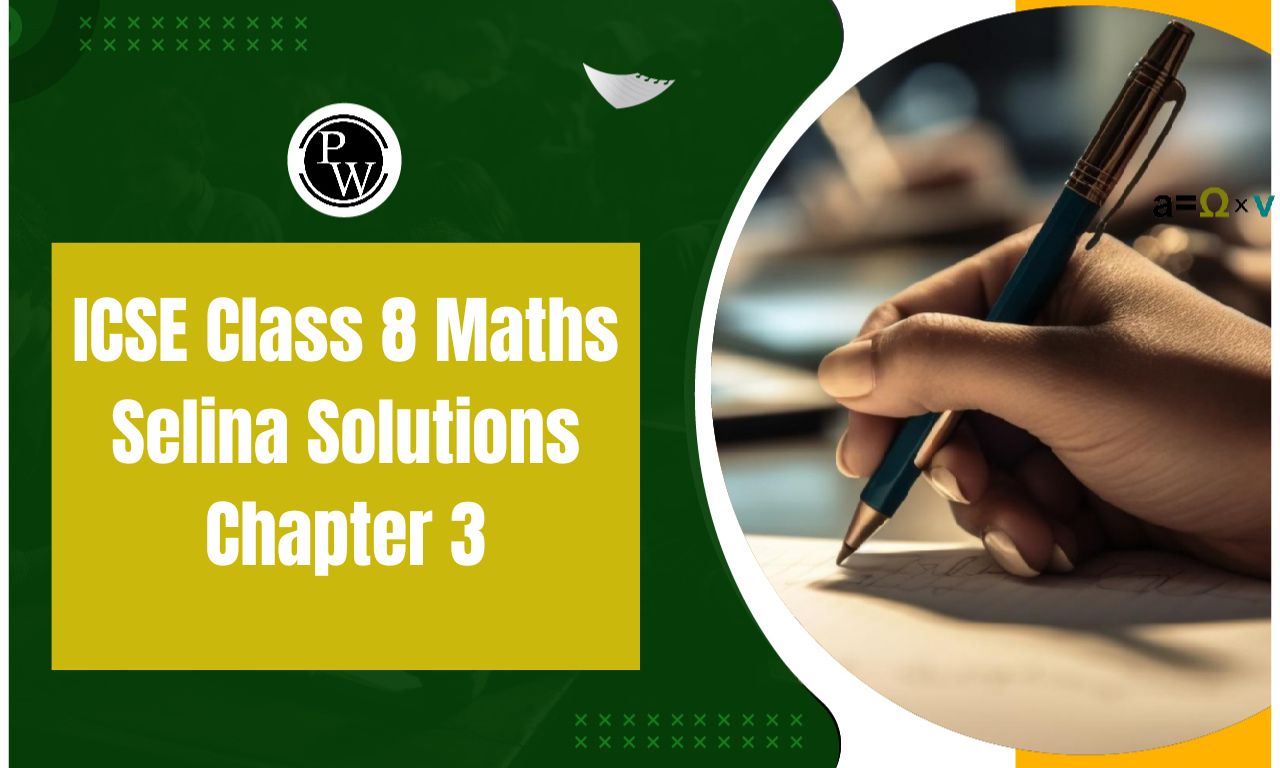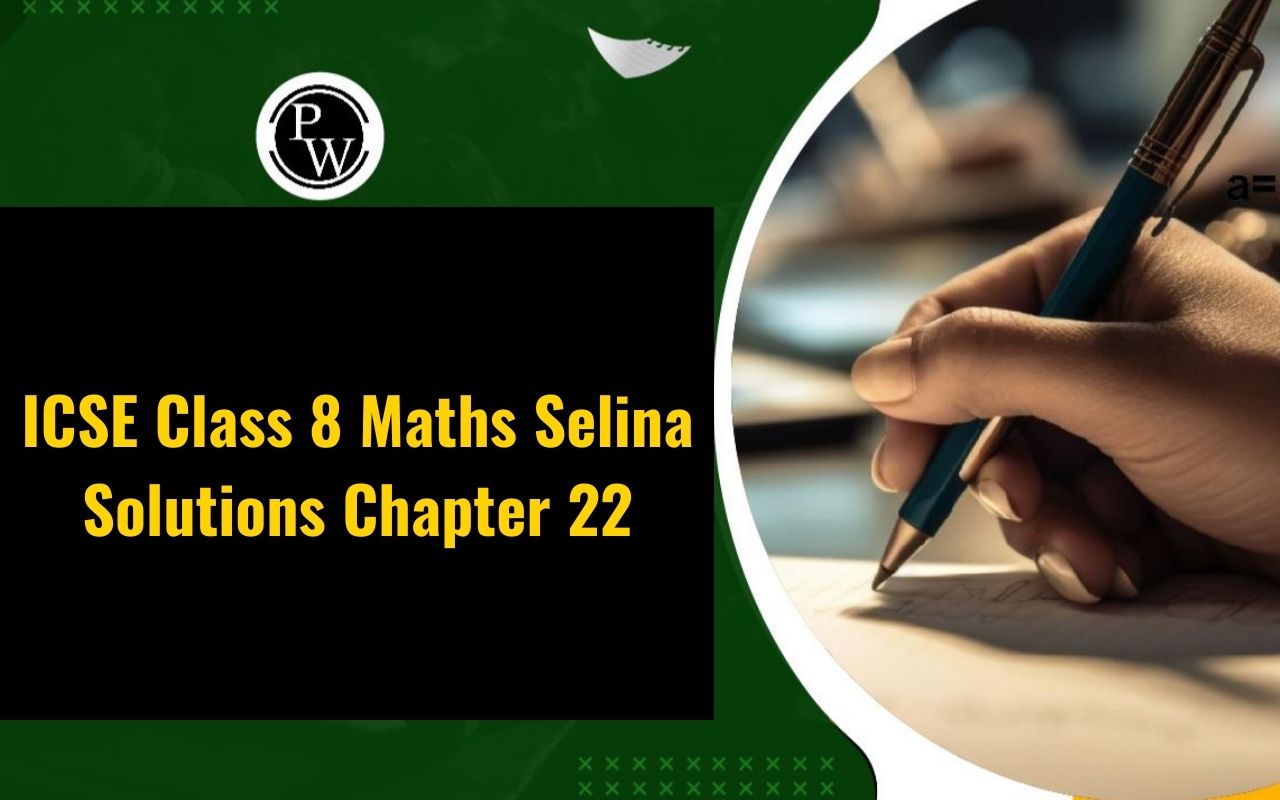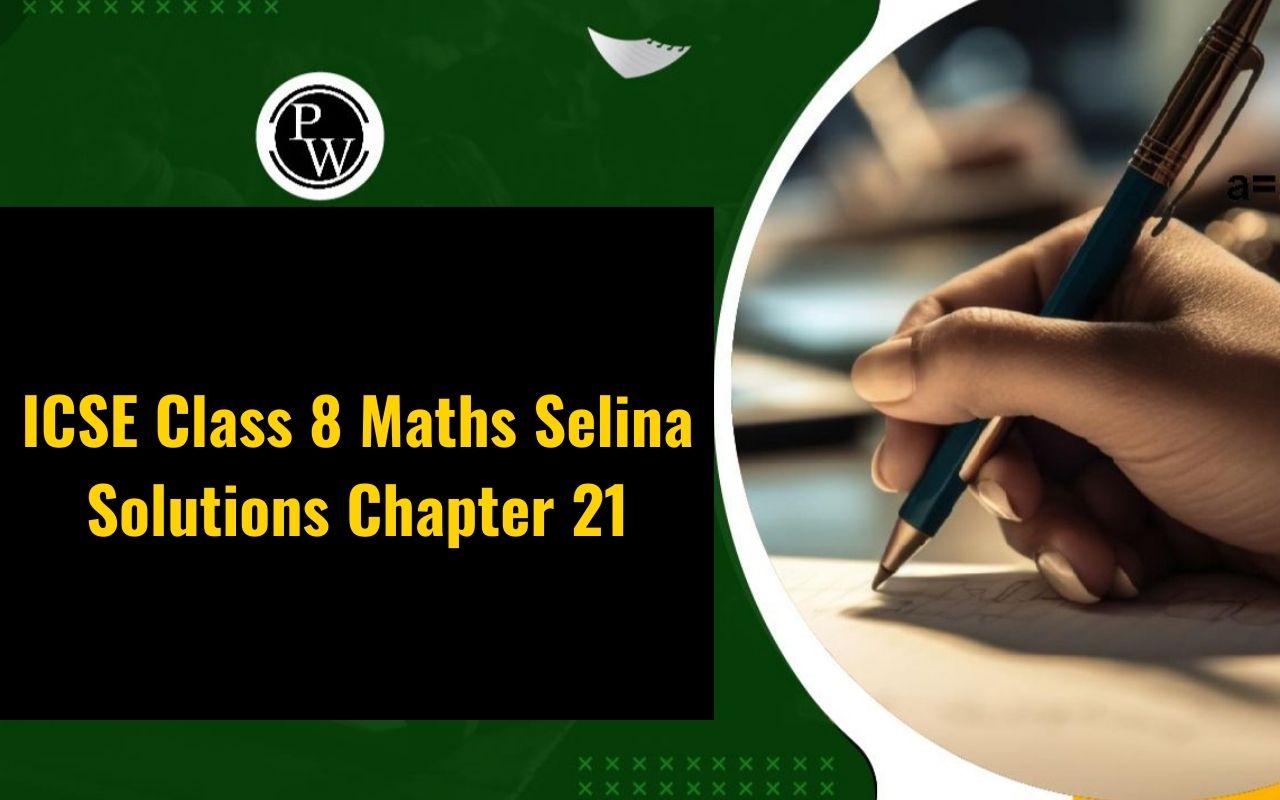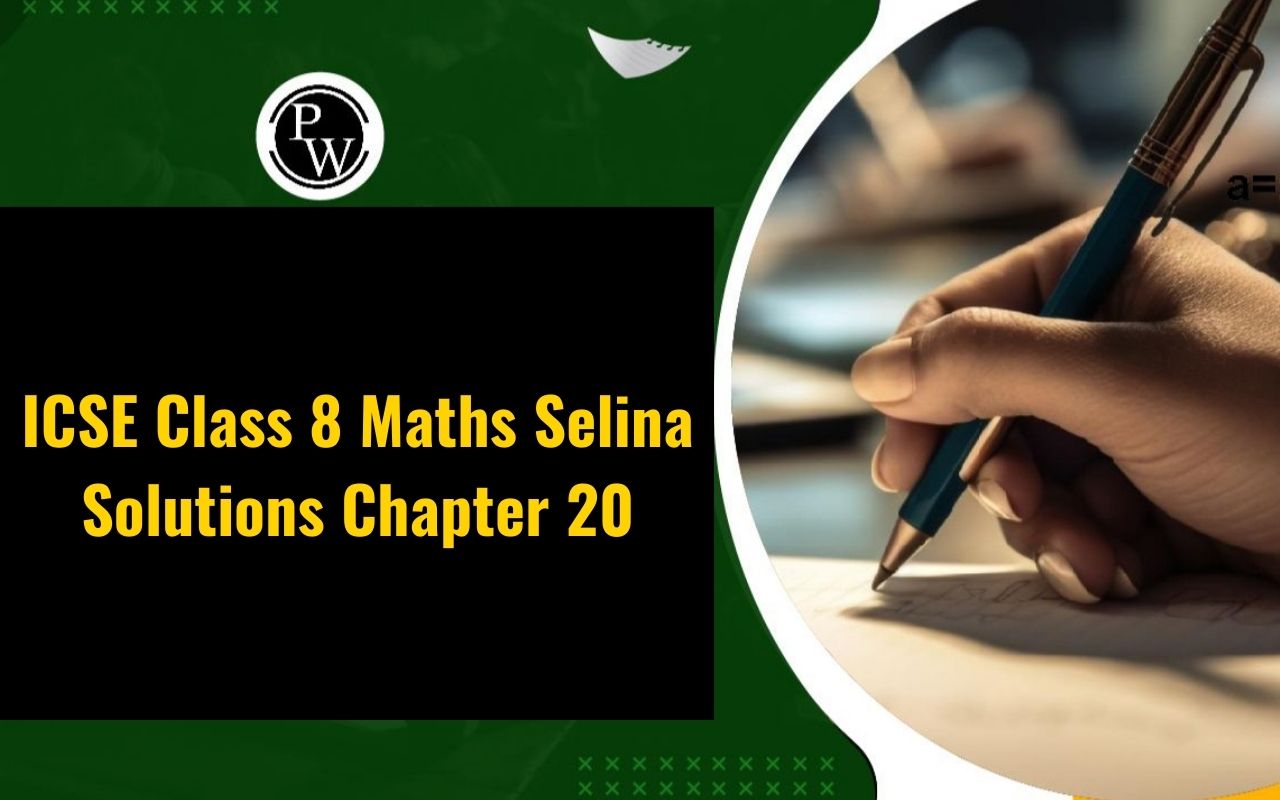
ICSE Class 8 Maths Selina Solutions Chapter 19: Chapter 19 of the ICSE Class 8 Maths Selina Solutions focuses on drawing three-dimensional (3-D) objects on two-dimensional (2-D) paper. It explains different ways to draw 3-D shapes using special paper with dots and shows how to view and sketch objects from different angles like the top, front, and side views.
The exercises help students develop the skill to picture and draw complex shapes, making this chapter a key part of their math studies.ICSE Class 8 Maths Selina Solutions Chapter 19 Representing 3-D in 2-D Overview
The ICSE Class 8 Maths Selina Solutions for Chapter 19, Representing 3-D in 2-D are prepared by subject experts from Physics Wallah. This chapter provides an overview of how to draw three-dimensional (3-D) objects on two-dimensional (2-D) paper. It explains various techniques to accurately represent 3-D shapes using special paper with dots and shows different perspectives, such as top, front, and side views. The exercises enhance students' ability to visualize and draw complex shapes making this chapter an important part of their math education.Representing 3-D in 2-D
Representing 3-D in 2-D refers to the process of creating two-dimensional (2-D) representations or drawings of three-dimensional (3-D) objects. In mathematics and technical drawing, this skill involves techniques to accurately depict the shapes and dimensions of 3-D objects on flat surfaces such as paper. Methods may include using different views (like top, front, and side views), isometric dot paper, and understanding how objects appear when flattened onto a plane.ICSE Class 8 Maths Selina Solutions Chapter 19 PDF
You can find the PDF link for ICSE Class 8 Maths Selina Solutions Chapter 19 "Representing 3-D in 2-D" below. This PDF provide detailed solutions and explanations on how to draw three-dimensional objects on two-dimensional paper using techniques like dot paper and different perspective views.ICSE Class 8 Maths Selina Solutions Chapter 19 PDF
ICSE Class 8 Maths Selina Solutions Chapter 19 Representing 3-D in 2-D
Below we have provided ICSE Class 8 Maths Selina Solutions Chapter 18 Representing 3-D in 2-D for the ease of the students –Question 1.
If a polyhedron has 8 faces and 8 vertices, find the number of edges in it.Solution:
Faces (F) = 8, Vertices (V) = 8 Using Euler’s formula, F + V – E = 2 8 + 8 – E = 2 16 − E = 2 E 16 − 2 ⇒ E = 14 Therefore, there are 14 edges in a polyhedron.Question 2.
If a polyhedron has 10 vertices and 7 faces, find the number of edges in it.Solution:
We have to find the number of edges of the given polyhedron . Given, number of faces F = 7 Number of Vertices V = 10 Euler’s formula for any polyhedron is, F + V – E = 2 Where F stands for number of faces, V for number of vertices E for number of edges. According to the question, 7 + 10 - E = 2 17 - E = 2 17 - 2 = E E = 15 Therefore, the number of edges is 15.Question 3.
State, the number of faces, number of vertices and number of edges of: (i) a pentagonal pyramid (ii) a hexagonal prismSolution:
(i) A pentagonal pyramid Number of faces = 6 Number of vertices = 6 Number of edges = 10 (ii) A hexagonal prism Number of faces = 8 Number of vertices = 12 Number of edges = 18Question 4.
Verily Euler’s formula for the following three dimensional figures:
Solution:
(i) Number of vertices = 6 Number of faces = 8 Number of edges = 12 Using Euler formula, F + V - E = 2 8 + 6 - 12 = 2 2 = 2 Hence proved. (ii) Number of vertices = 9 Number of faces = 8 Number of edges = 15 Using, Euler's formula, F + V - E = 2 9 + 8 - 15 = 2 2 = 2 Hence proved. (iii) Number of vertices = 9 Number of faces = 5 Number of edges = 12 Using, Euler's formula, F + V - E = 2 9+5-12=2 2 = 2 Hence proved.Question 5.
Can a polyhedron have 8 faces, 26 edges and 16 vertices?Solution:
Number of faces = 8 Number of vertices = 16 Number of edges = 26 Using Euler's formula F + V − E = 2 But 8 + 16 − 26 ≠ 2 ⇒ − 2 ≠ 2 No, a polyhedron cannot have 8 faces, 26 edges and 16 vertices.Question 6.
Can a polyhedron have: (i) 3 triangles only ? (ii) 4 triangles only ? (iii) a square and four triangles ?Solution:
(i)No, polyhedron has three faces. (ii)Yes, tetrahedron has four triangles its faces. (iii)Yes, a square pyramid has a square as its base and four triangles as its faces.Question 7.
Using Euler’s formula, find the values of x, y, z.
Solution:
(i) F + V − E = 2 ⇒ x + 15 − 20 = 2 ⇒ x − 5 = 2 ⇒ x = 2 + 5 = 7 (ii) F + V − E = 2 ⇒ 15 + y − 26 = 2 ⇒ y − 11 = 2 ⇒ y = 2 + 11 y = 13 (iii) F + V − E = 2 ⇒ 14 + 26 − Z = 2 ⇒ − Z = 2 − 40 ⇒ Z = 38Question 8.
What is the least number of planes that can enclose a solid? What is the name of the solid.Solution:
The least number of planes that are required to enclose a solid is '4'. The name of the solid is tetrahedron. It is a solid with four planes.
Solution:
Compare a square prism and a cube :
 A cube is a geometric figure in which the length of all three dimension is same.
A square prism is a cuboid with a square base, however it is not necessary that the height will be same as the side of square.
So, a square prism can also be a cube. If the height of the square prism become equal to the length of the side of the square bases, then the square prism become a cube.
A cube is a geometric figure in which the length of all three dimension is same.
A square prism is a cuboid with a square base, however it is not necessary that the height will be same as the side of square.
So, a square prism can also be a cube. If the height of the square prism become equal to the length of the side of the square bases, then the square prism become a cube.
Hence, a square prism is same as a cube.
Question 10.
A cubical box is 6 cm x 4 cm x 2 cm. Draw two different nets of it.Solution:

Solution:

Question 12.
Name the polyhedron that can be made by folding each of the following nets:
Solution:
(i) Triangular prism. It has 3 rectangles and 2 triangles. (ii) Triangular prism. It has 3 rectangles and 2 triangles. (iii) Hexagonal pyramid as it has a hexagonal base and 6 triangles.Question 13.
Draw nets for the following polyhedrons:Solution:

Benefits of ICSE Class 8 Maths Selina Solutions Chapter 19
- Enhanced Spatial Reasoning: By practicing drawing techniques and understanding different views of 3-D objects, students improve their spatial reasoning skills. This helps them grasp geometric concepts more effectively.
- Preparation for Higher Studies: Mastering 3-D to 2-D representation lays a strong foundation for advanced studies in geometry and technical fields. It prepares students for higher-level math and science courses.
- Real-World Applications: The ability to create accurate 2-D representations of 3-D objects is important in practical fields like architecture and engineering. It teaches students how to translate abstract ideas into tangible plans and designs.
- Problem-Solving Skills: Working through exercises in this chapter encourages critical thinking and problem-solving. Students learn to analyze shapes and figures from multiple perspectives, honing their analytical skills.
- Comprehensive Learning: The chapter not only covers drawing techniques but also reinforces concepts of measurement, scale, and proportion, fostering a holistic understanding of geometry and spatial relationships.
- Self-Assessment: The solutions provided in the chapter allow students to self-assess their understanding and progress. They can identify areas where they need improvement and practice.
ICSE Class 8 Maths Selina Solutions Chapter 19 FAQs
What does "representing 3-D in 2-D" mean?
Why is representing 3-D in 2-D important?
What techniques are used to represent 3-D in 2-D?
How does learning to represent 3-D in 2-D benefit students?

